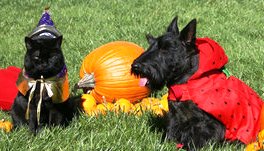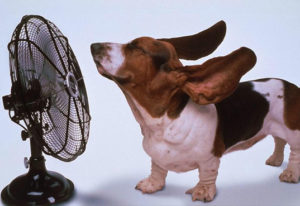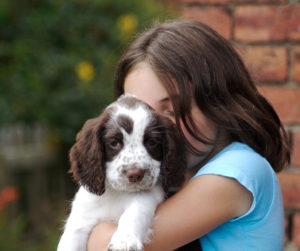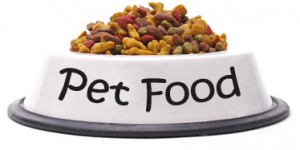
We hope this pup doesn’t find that basket of goodies!
Like most holidays celebrated in America, Easter brings food and fun for us and potential toxins and hazards for our pets.
Chocolate, macadamia nuts, xylitol sweetener, and Easter lilies are all toxic to pets if consumed.
Plastic Easter Grass can be especially appealing to cats and as with any linear item can cause life threatening obstructions in the intestinal track.
Large dogs are capable of obstructing their GI tracts by swallowing plastic Easter Eggs whole.
Stuffed animals given to the kids are often mistaken by the family dog as their play toy. The stuffing and plastic eye balls can also cause GI upset or obstruction.
Most pets are curious about new objects in the house so decorations, candles, Easter Baskets, toys and plastic/foil wrappers should be kept out of a pets reach.







 Can my kids get pinworms from our dog or cat?
Can my kids get pinworms from our dog or cat? How often should I worm my dogs and cats?
How often should I worm my dogs and cats?
 Over half of US cats and dogs are overweight or obese and their owners don’t even realize it.
Over half of US cats and dogs are overweight or obese and their owners don’t even realize it. See your veterinarian for more information on assessing your pet’s weight and selecting the best food for your pet’s life stage and health needs.
See your veterinarian for more information on assessing your pet’s weight and selecting the best food for your pet’s life stage and health needs.
